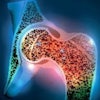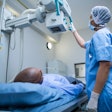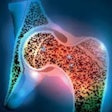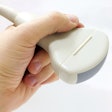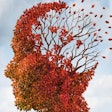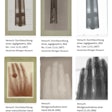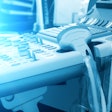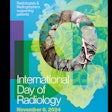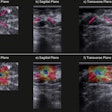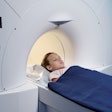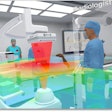
Appropriate training methods for radiographers have a substantial impact on their ability to interpret images accurately, according to research conducted in Singapore and presented at the 2016 U.K. Radiological Congress (UKRC) in Liverpool.
"There are still questions about the current ability of Singapore radiographers to perform image interpretation at an acceptable practice level, but this could be resolved through continuous professional development and better development of training plans," noted Yi Xiang Tay, a radiographer in the department of diagnostic radiology, Singapore General Hospital.
The ability of trained radiographers to interpret and make reliable decisions on images is demonstrated well in the literature and has a positive impact on patient management, but Singapore hospitals have yet to embrace the need for radiographer image interpretation in the radiology department. Normally, the provision of an abnormality signaling service is not available, he explained.
This situation prompted Tay to try to identify and evaluate the benchmark of performance by radiographers in image interpretation, using a PowerPoint-based platform. He used an image test bank containing 30 blind, double-reported, anonymized appendicular musculoskeletal images. Half of the images demonstrated fractures within, while the other half demonstrated normal anatomy.
 Source: Y.X. Tay, Singapore General Hospital, presented at UKRC 2016.
Source: Y.X. Tay, Singapore General Hospital, presented at UKRC 2016.The 48 study participants included general radiographers working in the department from different nations with a range of clinical experience and image interpretation training. Participants viewed all images and selected a series of five decision states, also commenting on abnormalities.
The figure provides clear evidence the trained radiographers (n = 8, 8/48, 17%) are performing better than the nontrained radiographers (n = 40, 40/48, 83%), Tay noted. However, because only one of the participants met the 90% accuracy benchmark from image interpretation, this may have implications on role extension.
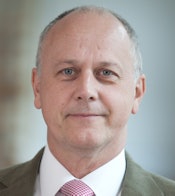 Chris Wright, PhD, from Sheffield Hallam University.
Chris Wright, PhD, from Sheffield Hallam University."Years of clinical experience did not appear to contribute to the performance of the radiographers in image interpretation," he commented. "Radiographers with in-house image interpretation training all scored accuracy of 70% or above in the test."
Tay's co-author, Chris Wright, PhD, from the Faculty of Health and Wellbeing at Sheffield Hallam University in Sheffield, U.K., helped develop a new software tool that offers the ability to assess and monitor the interpretation skills of radiographers. Called "RadBench," the package measures image interpretation performance metrics such as sensitivity, specificity, and accuracy. Click here for more details.
"Traditionally, image interpretation was the domain of the radiologist, but this is changing," he told AuntMinnieEurope.com earlier this year. "For example, increasingly, musculoskeletal reporting in many countries of the world is being done by highly trained radiographers, not radiologists."



